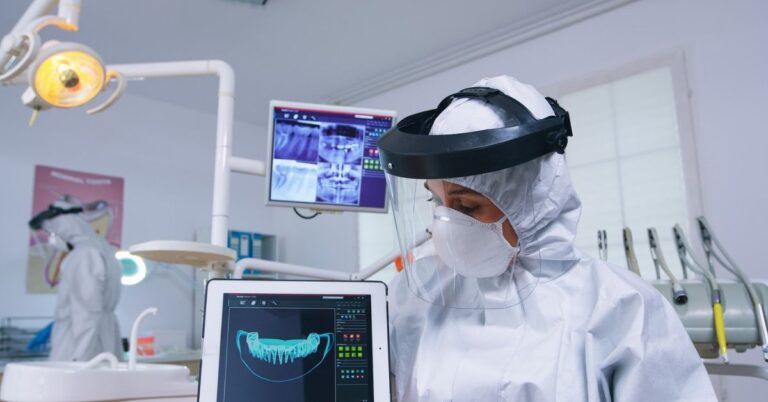Dentistry has historically revolved around drills, extractions, and invasive procedures, evoking unease and discomfort for many patients. However, advances in technology and science have revolutionized the field, leading to the rise of minimally invasive dentistry and biomimetic techniques. These innovative approaches prioritize conservation, comfort, and mimicking the natural structure of teeth, offering patients a seamless blend of efficacy and aesthetics.
Minimally invasive dentistry is rooted in the principle of preserving as much of the original tooth structure as possible. Traditional dentistry often involved aggressive removal of damaged or decayed portions of teeth, with the underlying assumption that this approach ensured longevity of dental restorations. However, minimally invasive practices challenge this notion by aiming for maximal preservation, viewing the natural tooth structure as invaluable and irreplaceable. This shift heralds a paradigm change where treatment strategies focus on prevention, early detection, and minimal intervention.
The Role of Technology
Emerging technologies are driving the advancements in minimally invasive dentistry. For instance, laser dentistry has become a cornerstone of modern dental care. Lasers enable precise removal of damaged tissue without affecting surrounding healthy structures, offering benefits such as reduced discomfort, faster healing, and lower infection risk. Similarly, air abrasion techniques utilize a stream of fine particles to remove decayed areas of teeth in a minimally invasive manner. Unlike drills, air abrasion is noiseless, reducing the fear often associated with dental treatments.
Digital imaging tools are also transforming the way dental professionals detect and treat problems. Intraoral cameras and cone-beam computed tomography (CBCT) allow high-resolution imaging that uncovers issues in their earliest stages. Early detection minimizes the need for extensive intervention, reinforcing the philosophy of minimally invasive care.
Biomimetic Dentistry: A Natural Approach
While minimally invasive dentistry emphasizes preservation, biomimetic techniques focus on replication. Biomimetic dentistry aims to restore teeth in a way that mimics their natural structure, function, and appearance. It is inspired by the biological blueprint of a tooth, consisting of enamel, dentin, and pulp, each with unique mechanical properties.
Traditional restorative materials often lacked the ability to emulate these properties, leading to outcomes that compromised strength, flexibility, or aesthetics. Biomimetic materials, such as composite resins, ceramics, and glass ionomers, have been developed to address this gap. These materials are engineered to behave like natural tooth components, allowing restorations to integrate seamlessly into the oral environment. For instance, composite resins used in fillings not only match the color of teeth but also mirror their strength and flexibility, preventing fractures and secondary decay.
Adhesive Dentistry and Micro-Invasive Techniques
Biomimetic principles align closely with adhesive dentistry, which utilizes cutting-edge bonding techniques to attach restorations without the need for extensive removal of healthy tooth structure. These adhesives create strong yet flexible connections that absorb stress, mimicking the way natural teeth distribute force during chewing.
Micro-invasive procedures, such as ICON resin infiltration for early-stage cavities, have further enhanced biomimetic dentistry. ICON targets the earliest signs of dental decay, restoring tooth integrity without drilling. It fills and seals microscopic pores where demineralization begins, effectively halting cavity progression. This gentle approach resonates with the philosophy of intervention that is precise and minimal.
Patient-Centric Benefits
The innovations in minimally invasive and biomimetic dentistry go beyond technical advantages; they redefine the patient experience. Traditional procedures often involved pain, multiple appointments, and long recovery periods. In contrast, minimally invasive techniques are less intrusive, significantly reducing pain and recovery time. Patients benefit from quicker treatments, fewer follow-ups, and reduced anxiety.
Moreover, biomimetic restorations offer aesthetic advantages, boosting patient confidence. They blend seamlessly with natural teeth, making the results virtually indistinguishable. In cases where damaged teeth are visible, biomimetic solutions restore not only function but also self-esteem.
A Paradigm Shift in Dental Care
Minimally invasive dentistry and biomimetic techniques represent a transformative shift in Dublin dental care Ohio, emphasizing prevention, preservation, and harmony with natural anatomy. These approaches challenge the invasive methods of the past, offering solutions that prioritize patient well-being and satisfaction.
As technology and research continue to evolve, the field of dentistry is poised to become even more patient-friendly and innovative. The era of the intimidating drill is giving way to precise, gentle, and aesthetically conscious treatments that are redefining oral health care.
Dentistry is no longer merely about treating teeth—it is about preserving the essence of natural beauty while empowering patients to embrace oral health with confidence and comfort. Beyond the drill lies a future where science and artistry converge to transform smiles and lives.

